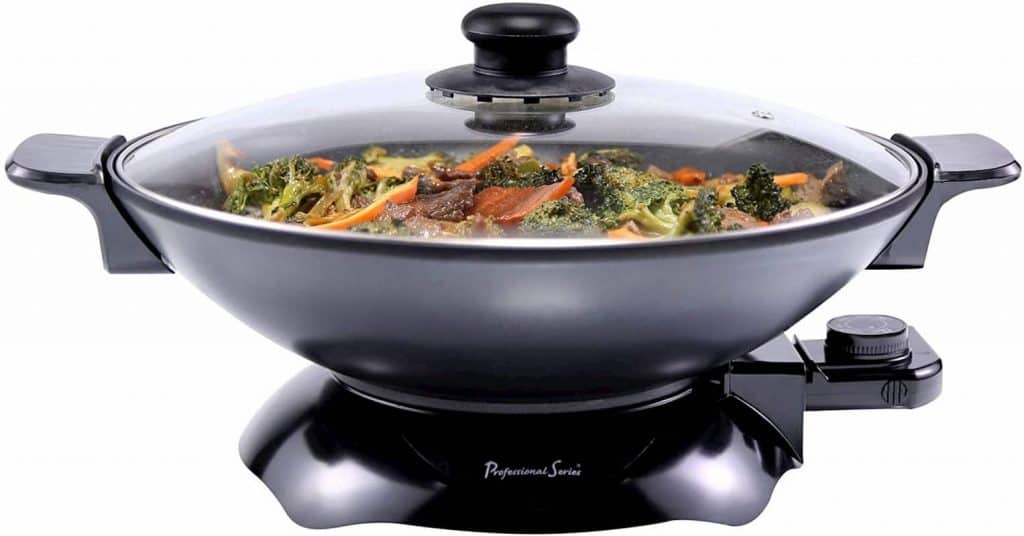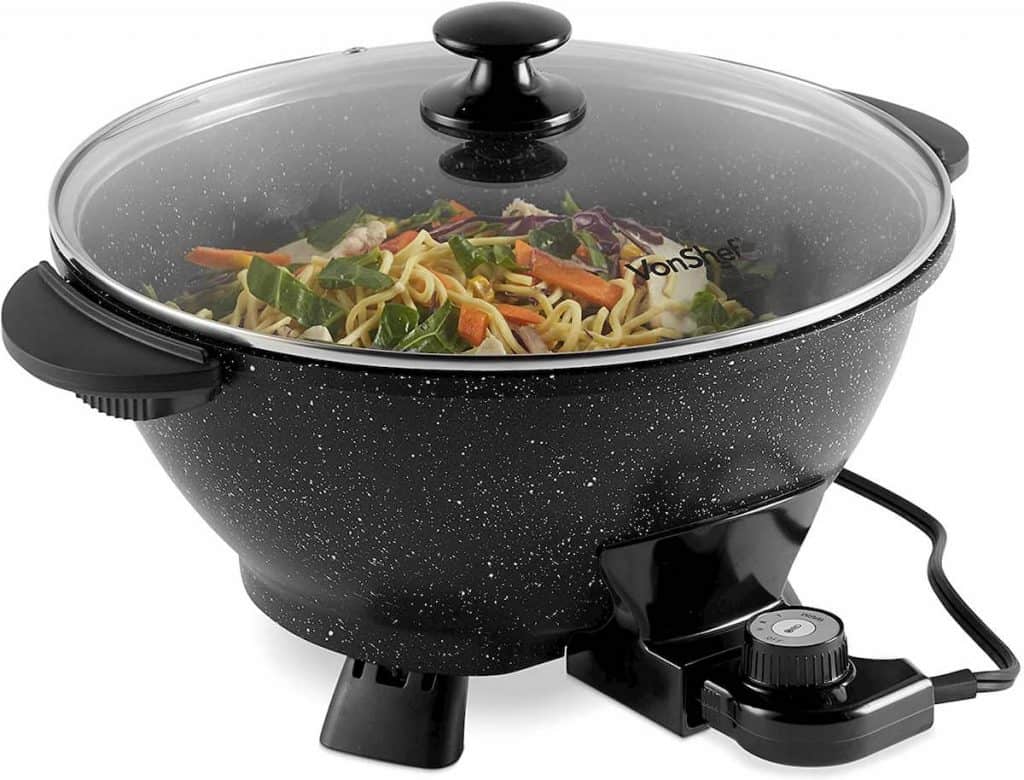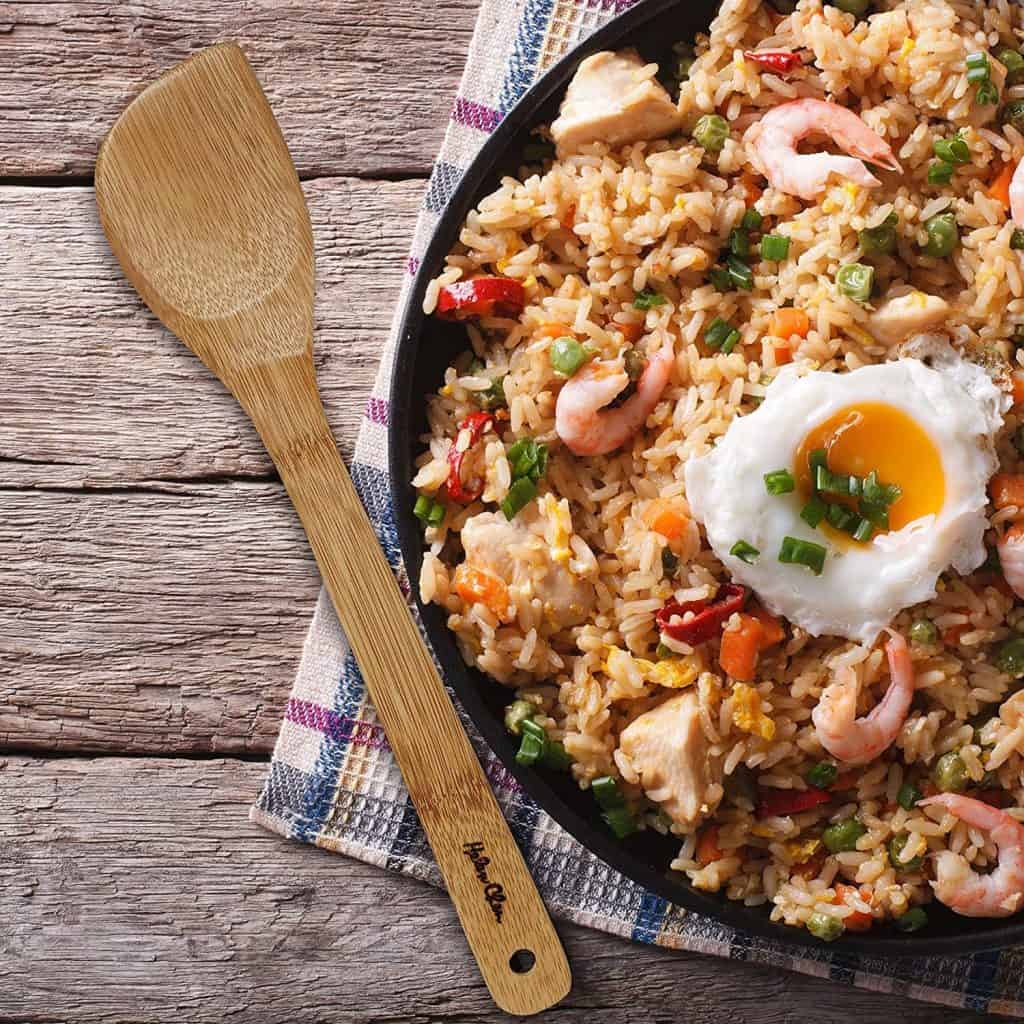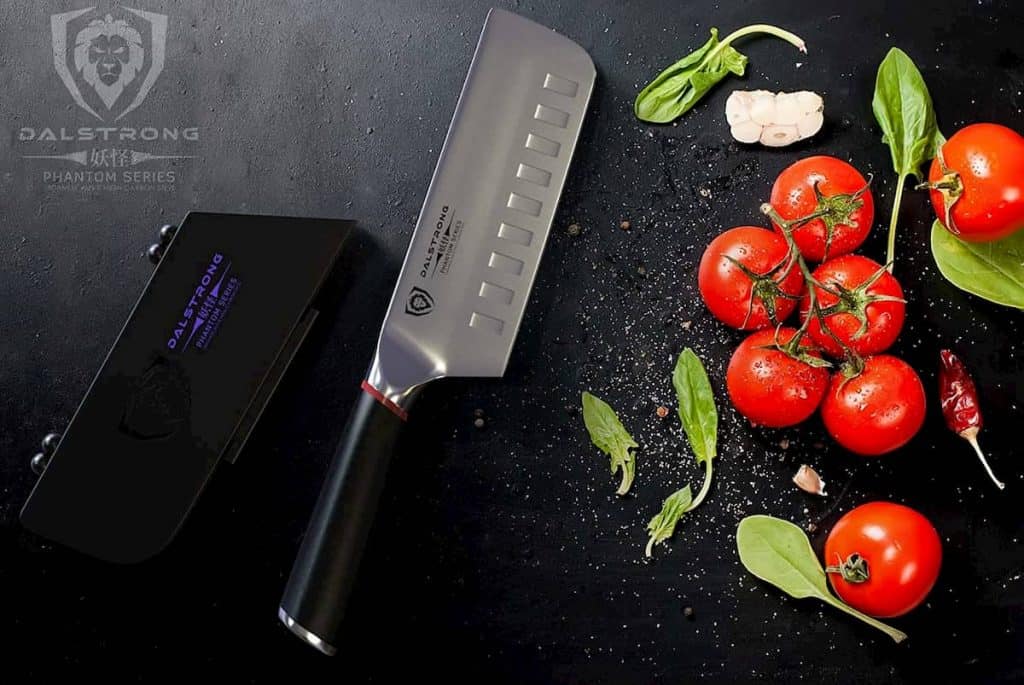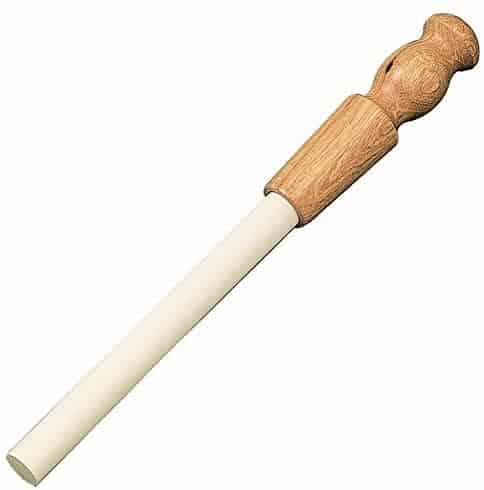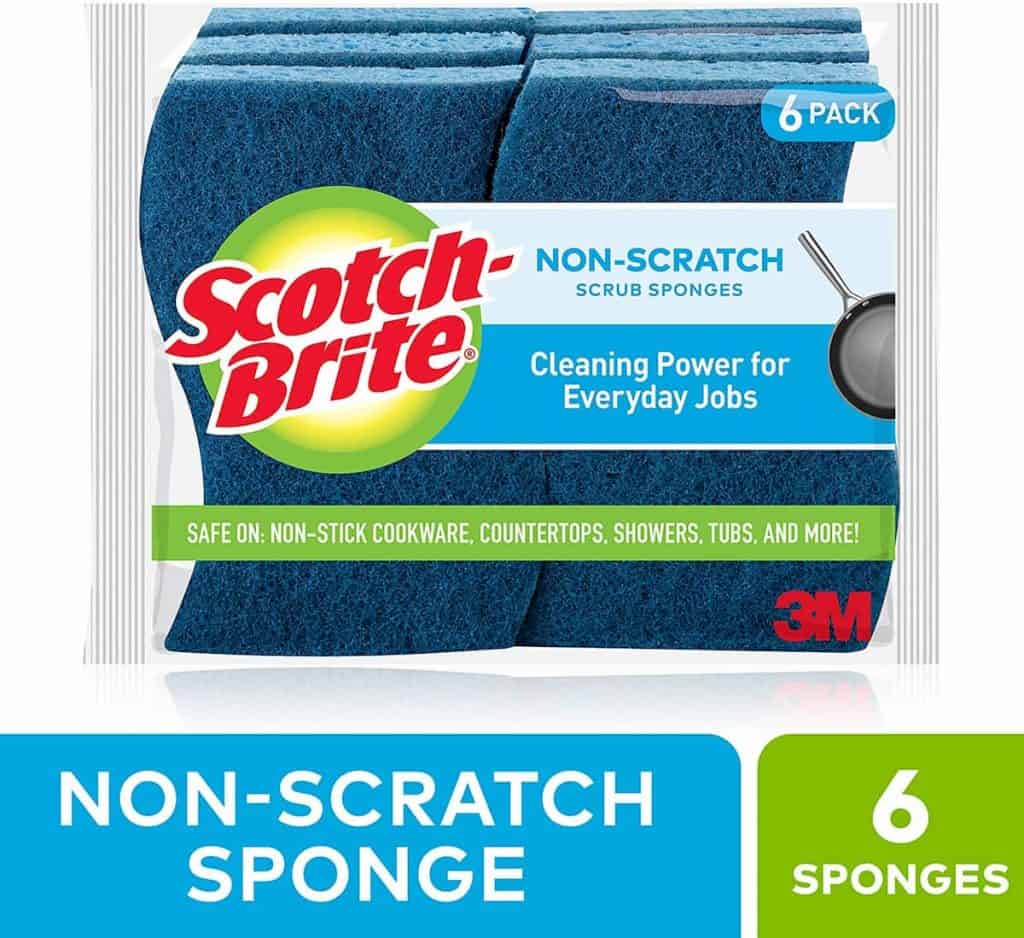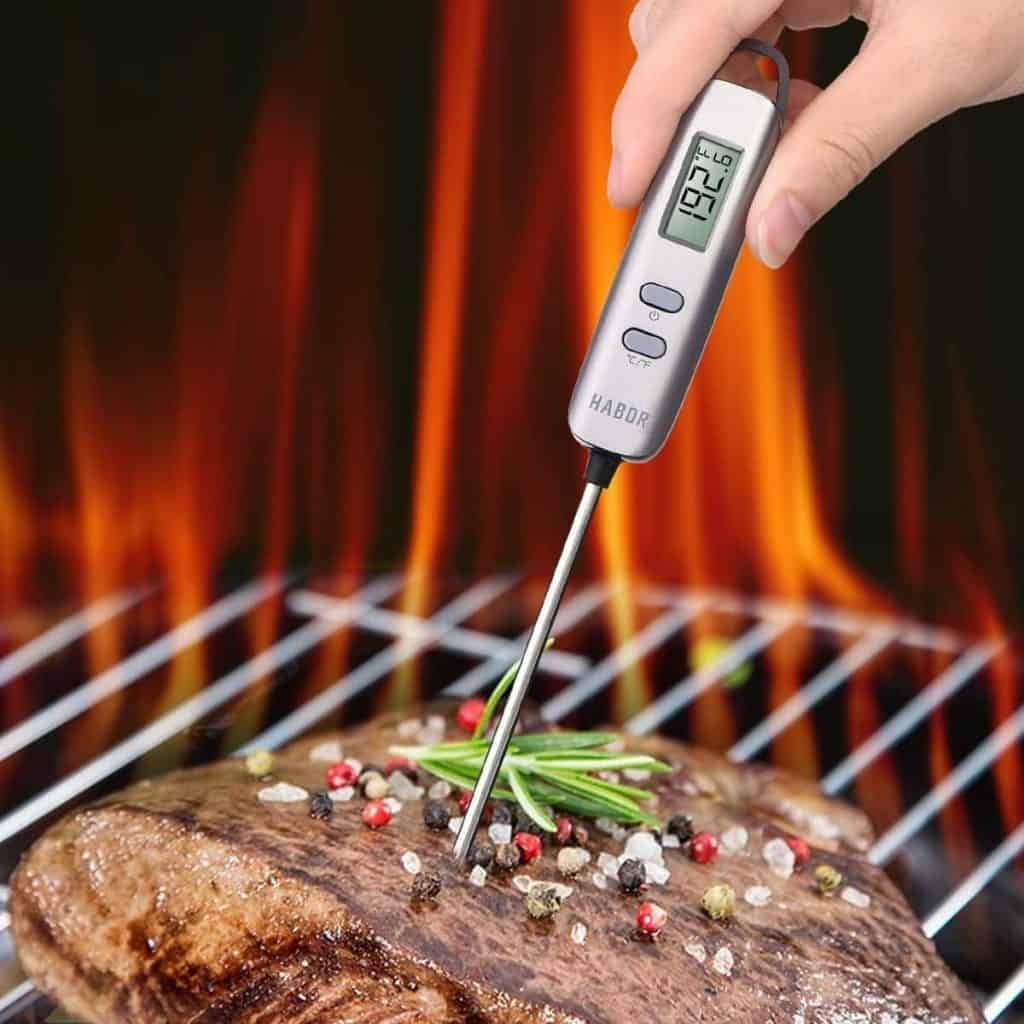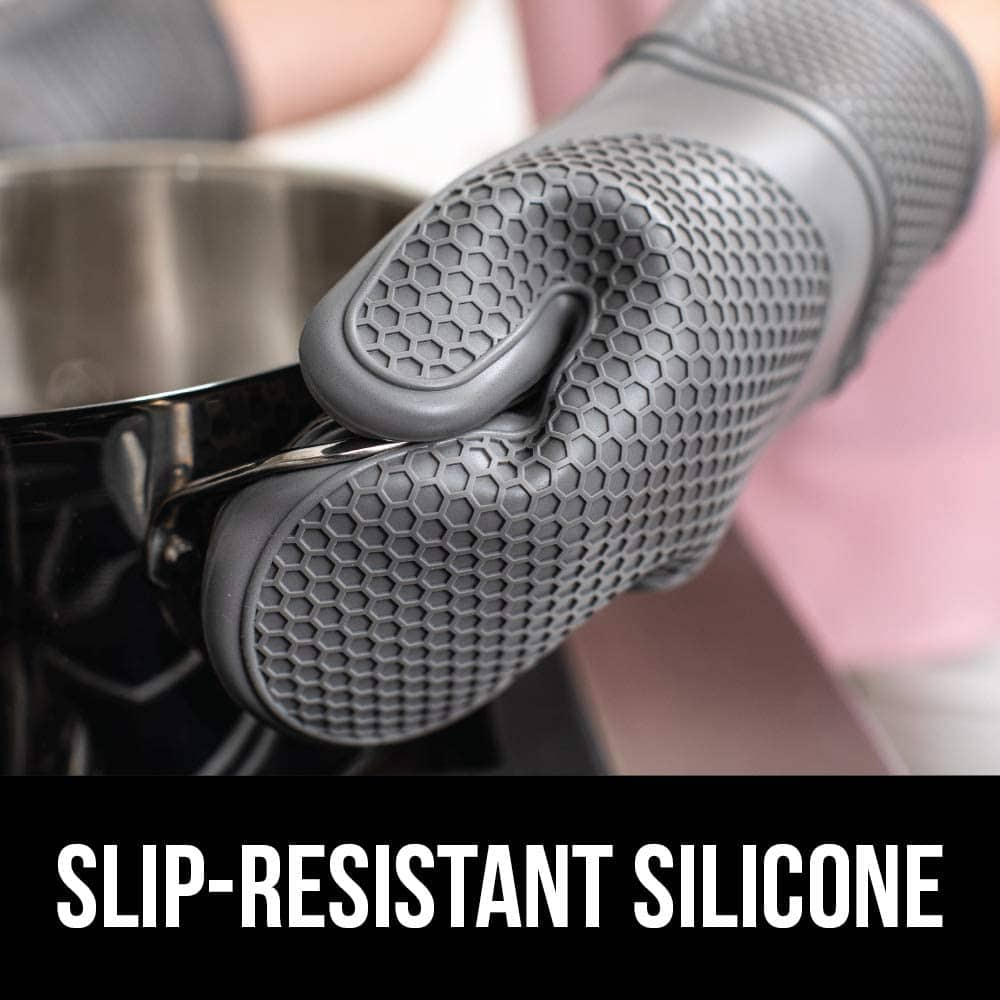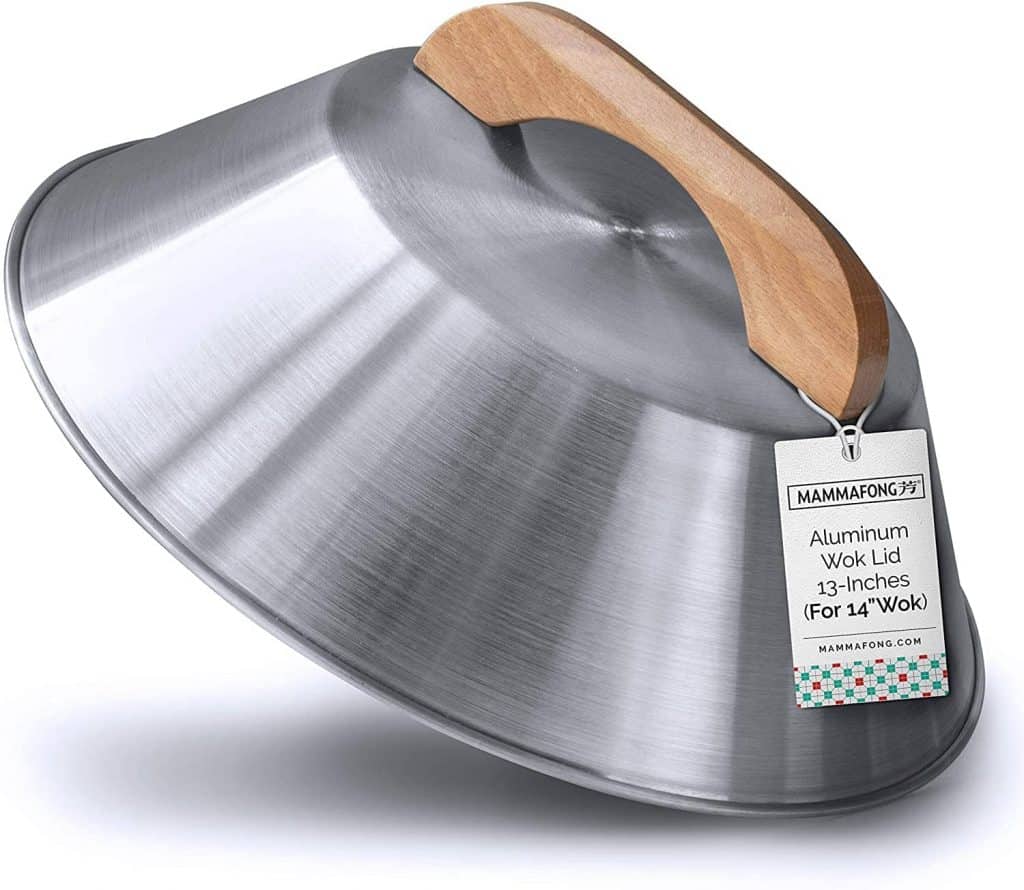Electric woks are handy for cooking delicious meals inside and outside the kitchen. While the wok began life in Asia, it doesn’t mean that it should be confined to solely cooking Asian dishes.
The style of the wok below begs me to cook in it. If I had this wok sitting on my countertop, I don’t think I could walk by it without throwing some vegetables and chicken in it. If you like the looks of this wok, I suggest you take a closer look at it here at Amazon.
The electric wok is versatile and can be used in many different ways.
But how exactly can you use an electric wok?
In this article, we will describe some basics about electric wok use and run through those little-known dishes you can also use it for.
The electric Wok – Some Basics
I like this electric wok because of the large knob on the vented lid. This large knob prevents you from getting steam burns when removing that darn lid.
The sides of this 14-inch wok by VonShef are high enough to prevent food from flying out when cooking or stirring. If you are seriously looking for an excellent electric wok, I will invite you to investigate the reviews and product specs at Amazon.
______________________________________________________________________________
An electric wok is a portable cooking device that uses electricity to run. It is usually sized up to 14 inches in diameter, providing an ample cooking space. When this arrives, you get the pan and an electric device that heats the pan by sitting underneath it.
Before you use your electric wok, be sure to read the manufacturer instructions supplied thoroughly.
The most obvious benefit of an electric wok is its portability. It allows you to cook anywhere. This means you can take it camping with you or perhaps cook in front of the television while catching up on your latest box set on Netflix.
Usually, electric woks allow you to control the temperature with a little precision. It will heat up pretty quickly, so be careful. Most get to 500°F.
More often than not, they are coated internally, so great news from a non-stick perspective. Many of the woks sold today DO NOT use Teflon as a non-stick coating.
Use High-Heat Oils and Wooden or Bamboo Utensils
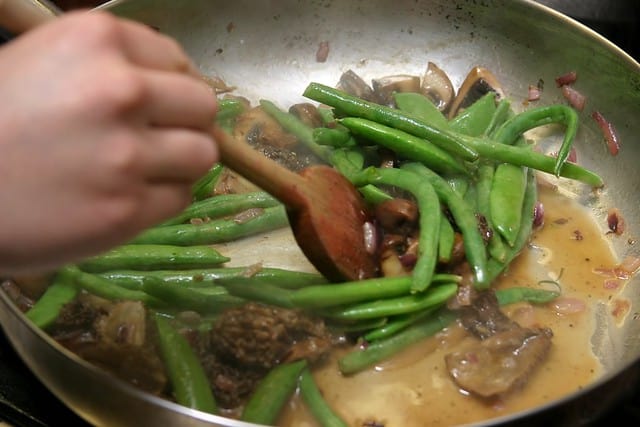
To protect your non-stick coating, I advise always using wooden (Olive Wood) or bamboo utensils. These won’t scratch and will keep that non-stick feature alive for longer.
Even if you own carbon steel or cast iron wok, these wooden or bamboo spatulas work perfectly. I like the bamboo spatula below because the spoon end is on an angle and curved, which conforms to the sides of my wok.
This curved part of the bamboo spatula makes scraping the sides and bottom of the wok a breeze.
Another advantage of using a wooden or bamboo spatula is that you can scrape hard foods that might stick to the bottom of your wok before you clean up. This will save you time when cleaning up.
Bearing in mind that the electric woks can reach 500°F, you will need to choose a cooking oil that can withstand such temperature without smoking or burning.
Avocado oil is still relatively new to the market, but it is gaining popularity due to its very high smoke point of 520ºF. Other oils you could use are:
- Peanut oil
- Grape seed oil
- Coconut oil
- Canola oil
- Lard
- Pork fat
- Shortening
- Sunflower oil
One other useful piece of advice would be to make sure you wear an oven mitten. Sometimes the handles are not heatproof. Additionally, this will protect you when faced with the urge to touch the pan (don’t do that!).
Whenever you are working with high temperatures, and you are moving fast, always be careful that you do not burn yourself or your food.
Pre-prepping
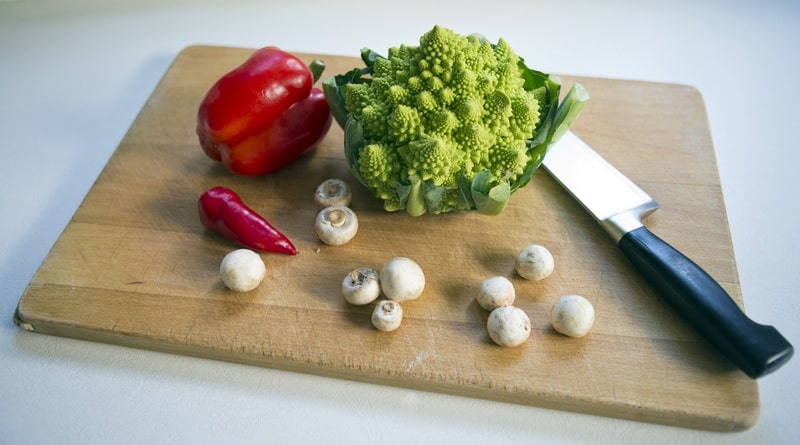
Another handy hint would be to pre-prepare food whenever cooking with a wok. As you are working fast, you need your ingredients readily available. So chop, dice, weigh, measure, and slice everything you need before switching on your device.
Best Knife for Cutting Vegetables
I found that the best knife for cutting vegetables are the less expensive ones. I like knives with a thin backbone with a thick blade from top to bottom. Here is an example of a knife that I like.
Talking about knives brings to mind…how do you keep it sharp? This is the sharpener that I have used for years. It is easy to use and easy to clean, and it just works. I no longer use knife sharpening “steels” or electric sharpers. They have been replaced by this Arkansas Superstick Ceramic Rod Sharpener from Amazon. I like this ceramic rod so much that I buy them for gifts.
This Arkansas Superstick Ceramic rod is really easy to clean. When the rod darkens from use, I pull the ceramic rod from the handle and wash it in the sink using soap and a Scotch-Brite sponge using the rough side of the sponge. I dry the ceramic rod and when it is totally dry and replace it in the handle. Here is the sponge use.
____________________________________________________________________________
One important tip is to cut all your ingredients to the same size. This is especially true for meat and chicken. If all ingredients are cut to the same size they all will get cooked at approximately the same time.
This will prevent delays and help to ensure that you don’t burn your food. Please make it so that the process of adding the next ingredient is efficient and super fast.
So that was a quick overview of some of the fundamentals of food preparation with an electric wok. Now for the best bit – using your wok for cooking in ways other than for stir-frying!
Steam
Steam is gaining popularity due to its health benefits, and now we will show you how steam with a wok. First off, you will need a bamboo steaming basket. We prefer bamboo as they are the least likely to catch on fire.
You will also need chopped veggies, or your chosen ingredients to have already been chopped or prepared ready for cooking. Switch on your wok – it needs to be on the high heat setting.
Once piping hot, pour in a little water or chicken broth into your wok. Then fill the steaming basket with the vegetables. Place your basket inside the wok, over the hot liquid.
Ensure you keep the heat setting on high. When you keep your heat on high, this will generate steam and thoroughly cook your chosen ingredients.
Here is a list of bamboo steaming baskets that I recommend.
Roast
We are going to use chicken as our roasting example. So for this, you will need a whole chicken like in the picture on the left below! Make sure that the chicken will fit inside your wok once the lid of the wok is on. If you want, you can season your bird with cooking oil, salt, and pepper.
One final note make sure you have the lid adequately fastened to your wok cause you do not want your chicken jumpin out!
Before

After > Yum!
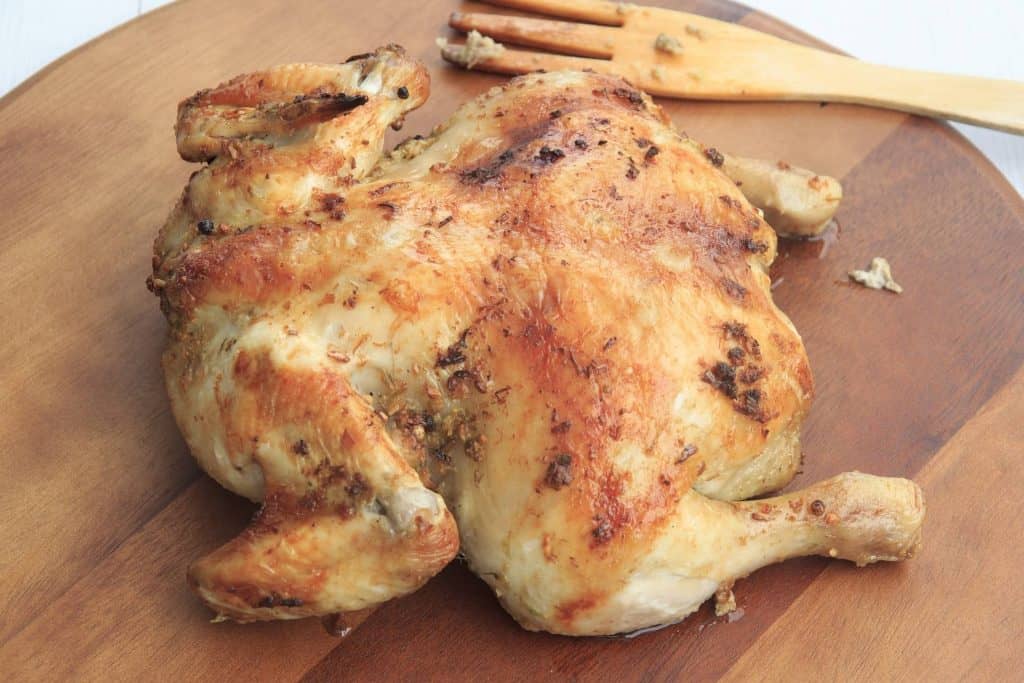
The use of a meat thermometer would be the perfect addition to your cooking arsenal. You need to make sure that your meat is cooked to the desired temperature. The nice thing about this thermometer is that the probe is small and thin enough to pierce even the smallest piece of chicken in your wok.
Here are some thermometers that I recommend. Check out their reviews on Amazon.
With your wok on the high-heat setting and hot enough for use, pour two tablespoons of cooking oil into the wok. I would use avocado oil because it is a healthier oil, and it has a high smoke/flashpoint.
Use your oven mitten to pick up the wok, and turn it until the oil is evenly distributed over the entire internal surface.
Here are some oven mittens that I can recommend.
Rub the chicken surface, using your hand, with cooking oil and season with salt and pepper. Place the chicken in the wok. Allow the outside of the chicken to brown, which should take 5-7 minutes on each side, namely bottom and top.
Reduce the heat setting to medium. If your electric wok came with a lid, you could use that lid to cover your chicken. If there is a lid vent, make sure that you close it and place the lid on the wok.
If you do not have a lid for your electric wok, this lid would be the perfect alternative.
Leave the chicken roast for 45 minutes. Check whether your chicken is done using a meat thermometer (as a reminder, the chicken is safe to consume once the temperature has reached 165ºF).
You can use similar principles for other meats, like a pot roast, but you could also add the vegetables in at the same time. As before, brown your chosen meat, then add any chopped veggies like carrots or potatoes. Place the lid over the wok, but this time do not close the vent!
Leave the meat roasting inside the wok until the vegetables are cooked all the way through.
Breakfast Options
We use our wok at breakfast time too. The generous size allows for many possibilities. Hash browns, fried or scrambled eggs, and delicious evenly cooked french toast are just some examples of what you can use your electric wok for. I usually turn my heat down to low for eggs and French toast.
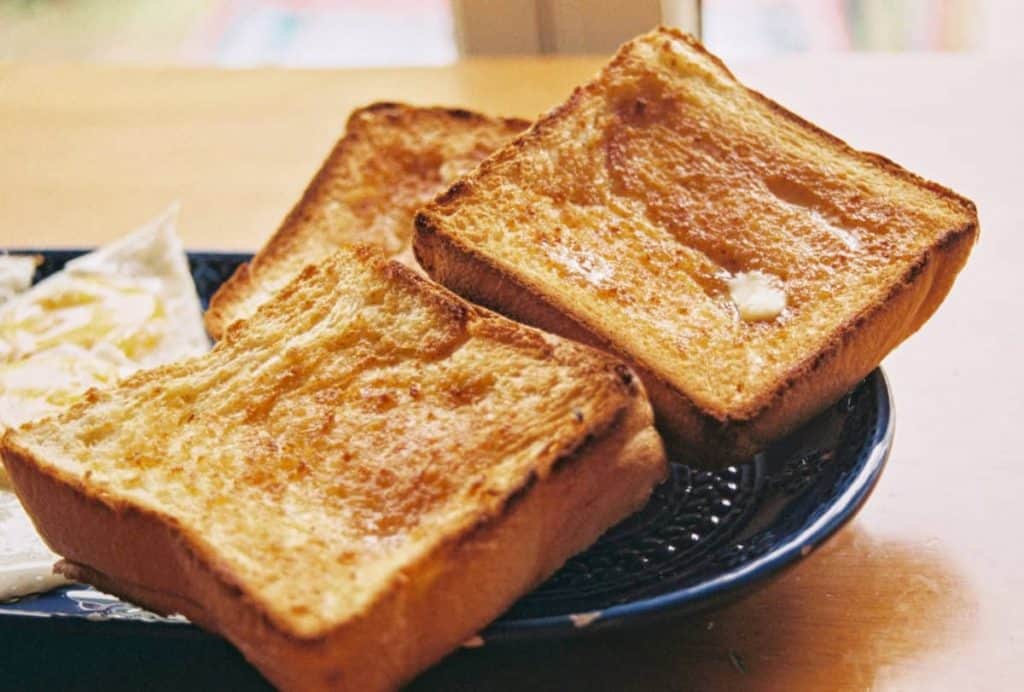
Start by thinking of your electric wok as though it were a regular pan. But one that has added benefits. It has a more extensive and unique shape, and it is portable. This way, you will find the transition to using it for cooking all types of dishes more comfortable and will adapt quickly. After a while, it will become your pan of choice.
How to Maintain Your Electric Wok
Electric woks are very easy to maintain and clean – yet another benefit of this device. While it is still hot, but without burning yourself, use a clean cotton dishcloth to wipe the interior surface.
If there are still food particles stuck to the surface, dampen the cloth and remove them. I use a used credit card to scrape the bottom and sides of the wok if food is stuck to those surfaces. Because the wok is hot, cleaning while hot will provide sufficient sterilization.
If you really need to clean your wok in the sink, you must read the cleaning instructions carefully beforehand. With the device being electrical, be mindful that some parts of it may not be submerged in water safely. It is also essential to thoroughly dry all parts of the wok before you plug it back in. For the safest results, you could air dry the wok overnight after regular towel drying.
Conclusion
By now, you will be able to see that the wok is not a stir-fry only device. It can be used in many different cooking methods, and its unique shape allows you to get creative in the kitchen while also reducing hazards.
With an electric wok, you have the added luxury of cooking anywhere – as long as you have access to an electrical outlet. So not only can you cook nearly anything in a wok, with an electric wok, you can do so anywhere and at any time!
Recommended Reading
What is the Best Oil to Use With a Wok?
Using the right oil for your stir-fry is the first step to a wonderful dish. No matter what oil you choose, try to use organic oil which does not have any GMO ingredients.
The 7 Best Woks of 2021 For Stir-Frying
If you are looking for the Best Non-Stick woks for 2020 then look no further. I have selected some of the best Non-Stick woks for stir-frying in this article.
Cast Iron Wok Stands vs Wok Rings?
Cast iron wok rings will solidly support your round-bottomed wok or your flat-bottomed wok. Cast iron wok stands are not made for electric stovetops either ceramic/glass tops or electric coil tops.
Best Wok Lids for 2021
One important feature of using your wok is the wok lid. While this is an area that's not always considered, a wok lid makes a big difference when it comes to cooking.
What is a Mandarin Wok?
Mandarin woks usually have only one long handle. This long handle is made of steel with a wooden or bamboo insert or can be without an insert. I also go over Cantonese and POW woks.
What Kind of Wok is Best for an Electric Stove?
The Best wok for a glass or ceramic top is a flat-bottomed carbon steel wok. Review this article to see why.
